#empress elisabeth alexeievna
Explore tagged Tumblr posts
Text

Portrait of Empress Elisabeth Alexeievna of Russia
Artist: Élisabeth Louise Vigée Le Brun (French, 1755–1842)
Date: 1795
Medium: Oil on canvas
Location: Castle of Wolfsgarten, Hessen, Germany
Elizabeth Alexeievna (Louise of Baden)
Elizabeth Alexeievna (24 January 1779 – 16 May 1826), born Princess Louise of Baden (German: Luise Marie Auguste von Baden), was Empress of Russia during her marriage to Emperor Alexander I.
#portrait#half length#painting#oil on canvas#empress elisabeth alexeievna#russian empress#russian empire#russian history#artwork#oil painting#fine art#louise of baden#grey-blue gown#scarf#pillow#gold necklace#french culture#french art#elisabeth louise vigee lebrun#french painter#european art#18th century painting
20 notes
·
View notes
Text
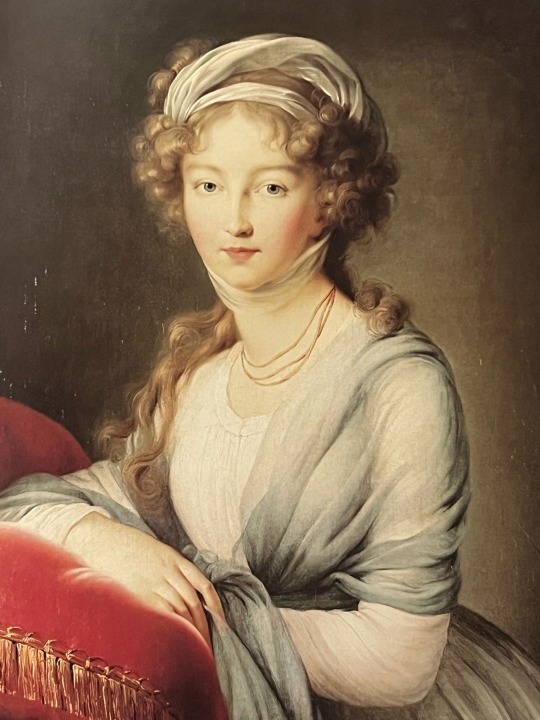
“Her features were fine and regular and her face a perfect oval. Her pretty complexion was not animated but of a paleness totally in harmony with her face, which was of an angelic sweetness. Her ash-blond hair floated around her neck and forehead. She was dressed in a white tunic fastened by a girdle knotted casually around a waist as fine and supple as that of a nymph.”
- Marie Louise Elisabeth Vigee-Lebrun on the future Empress Elizaveta Alexeievna of Russia.
43 notes
·
View notes
Text
Elizabeth Alexeievna (Russian: Елизавета Алексеевна; 24 January [O.S. 13 January] 1779 – 16 May [O.S. 4 May] 1826), born Princess Louise of Baden (German: Luise Marie Auguste von Baden), was Empress of Russia during her marriage to Emperor Alexander I. Via Wikipedia | @abwwia

Elisabeth Louise Vigée-LeBrun (1755-1842)
Portrait of Elizabeth Alekseevna (1779–1826), wife of Tsar Alexander I, after 1795
oil on canvas, h. 79 cm, w. 64,5 cm
National Museum in Warsaw
#Elizabeth Alexeievna#elisabeth louise vigée-lebrun#art by women#art#palianshow#women's art#art herstory#herstory#Empress of Russia#russian
7 notes
·
View notes
Text
Romanovs and their crazy love stories

Historical background:
Aleksey Okhotnikov, a handsome young officer who had a secret love affair with empress Elizabeth Alexeievna and who most probably was a father of her second daughter. Alexander the Cuckold graciously claimed the girl as his own. She died soon anyway.
Okhotnikov and Elisabeth were pining for each other for a really long time, exchanging meaningful stares, sighing heavily and making all the slowburn appreciators go crazy.
(# forbidden love # mutual pining # slowburn # UST # RST)
Elizabeth left a diary where she described her love affair. When, after her and Alexander's death, this diary was read by emperor Nicholas I and his wife, they immediately decided to burn it. I guess, it was a little bit to spicy for their taste. They wouldn't survive ao3. Luckily, some parts of that diary still made their way to us.
There was a nice legend that Okhotnikov was killed by some shady guy who sneaked up on him in a dark alley when Okhotnikov left the theater (fr, dude, haven't you ever watched Batman?), and some people even said that the culprit was Grand Duke Konstantin (why?? to restore his brother's honor, I guess??? (lol, no, he totally didn't give a damn) maybe he had a secret crush on Alexander's wife?? I guess we'll never find out the truth)
For real, though, we'll never find out the truth, cause the latest researches found out that Okhotnikov was never attacked with a knife, he simply died from tuberculosis. It was just a legend. Admittedly, a nice one.
#russian history#alexander i of russia#history#russian empire#napoleonic era#napoleonic wars#alexander i#historical shitpost#Elisabeth alexeievna#Alexey Okhotnikov#Aleksei Okhotnikov#Elisaveta Alexeievna#romanovs#napoleonic shitpost#grand duke konstantin pavlovich of russia#Grand duke Konstantin Pavlovich
47 notes
·
View notes
Text
The Old Mausoleum and Princess Elisabeth.
In the Grand Ducal Hessian family, the name Elisabeth evokes melancholic feelings; as the lives of the beholders of this beautiful name, which means 'God-given', the princesses Elisabeth, later Grand Duchess Elizaveta Feodorovna (1864-1918) and Elisabeth, Elizaveta Feodorovna's niece (1895-1903), were princesses whose lives and destinies were intermingled with happiness, devotion, service, and sadness. Today, remembering the beholders of this name, we can remember another Hessian princess named Elisabeth who, like Grand Duke Ernst Ludwig's daughter, also died in childhood. Being so young when she passed away, information about her is scarce. She was the fourth child and first daughter of the Hereditary Princely couple of Darmstadt, Ludwig and Wilhelmine, but the fact is that Elisabeth's parents had been leading separated lives for a while and, the age gap with her older brothers, Princes Ludwig and Karl, was of more than a decade. Therefore, that her biological father was not the Hereditary Prince does not come as a surprise, being the most probable biological father August von Senarclens-Grancy, a Swiss noble in service to the court. He was also the possible biological father of her younger siblings, Alexander and Marie, but, like her, they were also recognized by Ludwig. Wilhelmine's pregnancy with Elisabeth is mentioned in a letter from her sister, Russian Empress Elizaveta Alexeievna to her mother, Amalie of Hesse-Darmstadt: '...I am very sorry for my poor aunt in Darmstadt [Luise, Grand Duchess of Hesse and by the Rhine, mother-in-law of Wilhelmine], whose eyes are in such a bad state. Is she happy with Mimi's [Wilhelmine's nickname] pregnancy ? Dear mother, I don't think I have been secretive with you, but when Mimi told me that I was the first person she had spoken to about her pregnancy, I thought it was not for me to be the first to speak of it, but for her in every way. I still don't know how far along she is, she hasn't told me, but I'm sure you do, dear mother...' . Three months after this letter was written, on the 20 of May of 1821, Amalie Elisabeth Luise Caroline Friederike was born. Although not directly mentioned, she was possibly named in honor of her maternal grandmother and maternal aunts and her official paternal grandmother. She, as a child, possibly spent the majority of her time with nannies that took care of her, and with her mother Wilhelmine. Elisabeth has been referred to as her mother's favorite daughter. Her mother, who loved to travel to Switzerland and had visited it several times before, decided to take all her children in a travel there, but what was to be a happy event, was marked by tragedy, as Elisabeth, in the outward journey, contracted scarlet fever and died on May 27, 1826, in Lausanne, a week after her fifth birthday.
Little Elisabeth was laid to rest first in the Darmstadt City Church for some time until 1831, when the mausoleum her mother had asked court architect Georg Moller to erect in the Rosehöhe, a most loved place for her, was finished. This mausoleum with time became an important burial place for the Hessian Grand Ducal family.
As for Wilhelmine, with the death of Elisabeth, her love for Switzerland, traveling, and life in general decayed. She said some years later 'the old wanderlust is no longer to be found in me'.
Wilhelmine died in 1836, and asked her husband, now Grand Duke Ludwig II, to have a simple funeral and to be laid to rest with her beloved Elisabeth.
Sources: L'impératrice Élisabeth, épouse d'Alexandre 1er by Grand Duke Nikolai Mikhailovich, podcast 'Treffpunkt Heilingenberg' #3 'Eine Affäre in der Schweiz', Die Hessin auf dem Zarenthron: Maria, Kaiserin von Russland, http://www.park-rosenhoehe.info/Park_Geschichte.html and https://freunde-des-schlossmuseum-darmstadt.de/wp-content/uploads/2021/09/flyer_palais.pdf
Thanks to @abigaaal for her feedback on this!
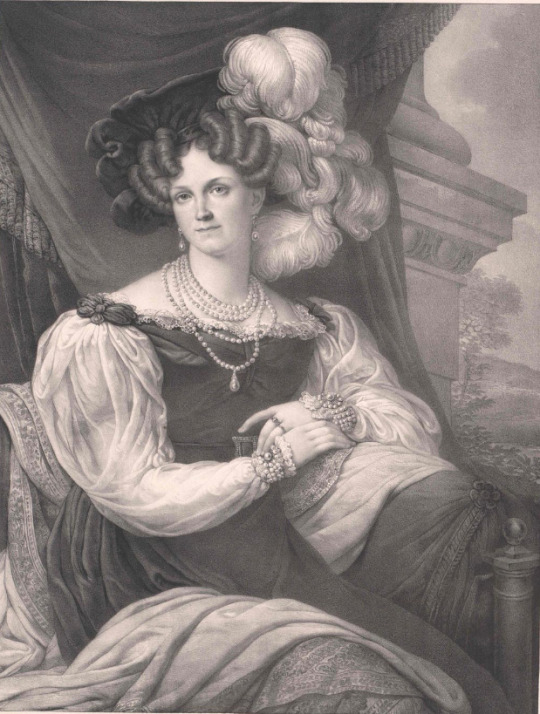
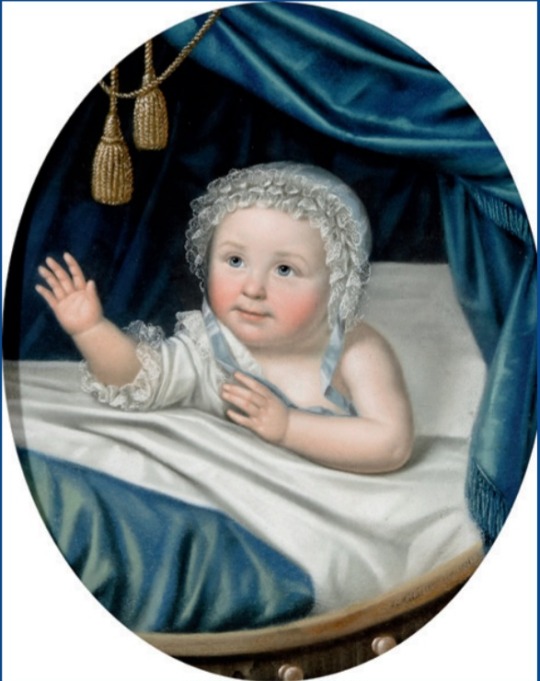
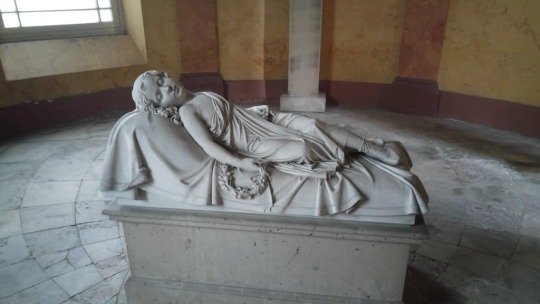
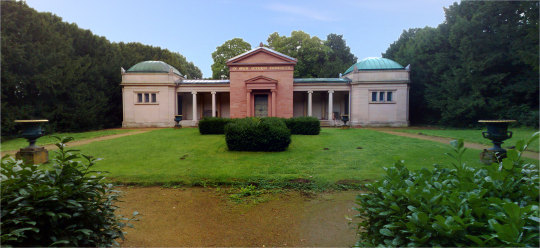
#grand ducal family of hesse-darmstadt#princess elisabeth of hesse-darmstadt (1821-1826)#Grand Duchess Wilhelmine of Hesse-Darmstadt#Princess Wilhelmine of Baden#Prinzessin Elisabeth (1821-1826)#Altes mausoleum#Old Mausoleum#Rosenhöhe#darmstadt#Too much Elizabeths
30 notes
·
View notes
Text

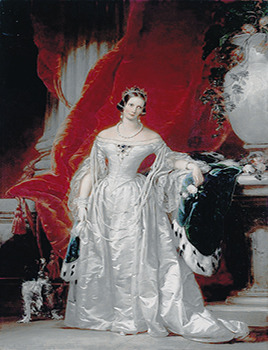
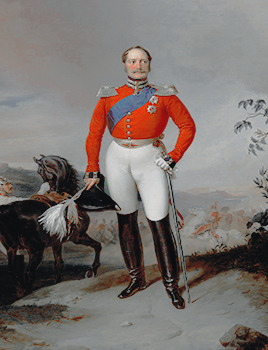

"The new Tsarina, Alexandra Feodorovna, was born Princess Charlotte of Prussia, daughter of the famous Queen Louise. The romance between the two began when Nicholas was 18 and Charlotte was 17. The couple walked hand in hand through the countryside, and then went to listen to concerts at the Berlin Opera, where works by Mozart and Beethoven were played. On July 13, 1817, the romantic and magnified Charlotte, already calling herself Alexandra, married the future Tsar Nicholas I. She could not imagine that one day the Imperial responsibilities would crush her fragile shoulders. The Dowager Empress was very fond of her daughter-in-law, whom she compared to "a morning of spring." Elisabeth (Alexeievna), on the other hand, did not seem at all sensitive to her charms. Suspicious and merciless, Nicholas I was also a demanding, not to say despotic husband. His fragile wife did not take very long in losing her freshness and health. The rhythm of life imposed by the emperor and seven consecutive births contributed to the weakening of Alexandra. The best description of the relationship between the two was left to us by the Marquis de Custine: "he takes care of her, prepares drinks, makes her take them, like a nurse; as soon as she gets to her feet, he returns to kill her with agitations, parties, trips, love (…). Woman, children, servants, relatives, favorites, in Russia everything must accompany the imperial whirlwind smiling to death." Indeed, Nicholas never noticed Alexandra's excessive thinness, nor the resignation in her tired eyes. "It is a great joy," she wrote to her brother, "to always have a little child at home, but I wanted so much to spend several years resting…". After twenty years of marriage The Emperor still wrote to his wife: "God has given you such a happy temperament that there is no merit in loving you. I exist for you, you are me -- I couldn't say it any other way… If sometimes I am demanding it is because I seek everything in you: happiness, joy, rest… I'd like to make you a hundred times happier.""
The Tsarinas - The Woman who Made Russia | Vladimir Fedorovski.
(Loose translation)
#the romanovs 2013#tsar nicholas i#charlotte of prussia#tsarina alexandra feodorovna#tsar#tsarina#facts#my own#movie gif
58 notes
·
View notes
Photo

Portrait of Empress Elisabeth Alexeievna of Russia - Elizabeth Louise Vigée Le Brun
19 notes
·
View notes
Photo

The Russian Nuptial Tiara.
It is not known who was the first wearer of this tiara since according to the Russian Diamond Fund it was made for Archduchess Marija Fëdorovna, second wife of Tsar Paul I of Russia, while other sources state that it was made for Empress Elisabeth Alexeievna, wife of Tsar Alexander I of Russia. It was created around 1800 by jeweller Jacob David Duval, and the high kokoshnik design is centred on a spectacular natural pink diamond, a 13.33-carat stone from the treasury of Tsar Paul I of Russia. This stone alone would be worth about $ 71,200,000, and was initially supported by a foil to enhance the pink color, but then removed. In addition to this pink diamond, the tiara is made up of white diamonds from Brazil and India which would have a weight of over 1,000 carats.This tiara is formed of a sliding base that surrounds the pink diamond, from which hang a multitude of briolette-cut diamonds, which dangle so that they can tremble and sparkle with every movement of the wearer. The tiara is topped with a row of large vertical pear-shaped diamonds. Over the years this tiara became a jewel worn by generations of imperial brides. Many of these jewels owned by the Russian Imperial Family were dismantled and then sold in single pieces, but this was sold entirely and purchased by Marjorie Merriweather Post and is now part of her collection at the Hillwood Museum. And today this is owned by the Russian government and are now kept in the museum of the Diamond Fund in the Moscow Kremlin.
149 notes
·
View notes
Photo





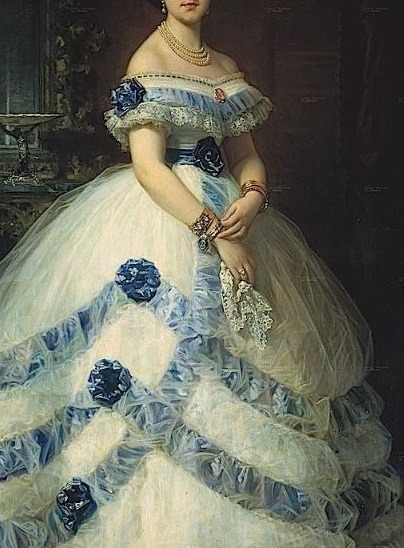




For reference: Jennette’s dress in The Lovely Princess
The flower crown lp! Jennette is wearing at her debutante ball reminds me a little bit of the one Elisabeth Alexeievna wore. She was a Grand Duchess who later became the Empress of Russia. Side fact: she was described as “shy and naïve, and ill-prepared for her new position. She was overwhelmed by the splendor of the Russian court and frightened by the vicious intrigues waged there with cold calculation.” (it’s fun to find these parallels even if it wasn’t intentional)
The blue rose shaped decorations at her lower skirt resemble the details of Isabel Álvarez Montes’ dress (left picture bottom).
The pink bows on her sleeves and chest are similary placed as to the bows on the blue dress on the left that François Boucher’s - Madame de Pompadour (ca. 1758) wore.
Fun Fact: Madame de Pompadour’s father is not fully known and another man named Le Normant de Tournehem became her legal guardian when her suspected father was forced to leave the country to avoid the death sentence. At age 5 Jeanne Antoinette was sent to receive the finest quality education of the day in an Ursuline convent in Poissy, where she gained admiration for her wit and charm. During this time her mother took her to a fortuneteller, Madame de Lebon, who predicted that the girl would one day reign over the heart of a King. Henceforth she became known as “Reinette”, meaning "little queen".
At the age of nineteen, Jeanne Antoinette was married to Charles Guillaume Le Normant d'Étiolles, the nephew of her guardian, Charles Le Normant de Tournehem. Sounds familiar, doesn’t it? (foster daughter marries the heir of the house she was adopted into? Ijekiel and Jennette?)
#wmmap#who made me a princess#sbapod#suddenly became a princess one day#parallels#the last one is just me reaching#jennette margarita#jeannette margarita#jennette magarita#debutante ball#lp verse#lovely princess#wardrobe#fashion
236 notes
·
View notes
Photo

Portrait of Empress Elisabeth Alexeievna, 1795, Vladimir Borovikovsky
31 notes
·
View notes
Photo

Grand Duchess Ekaterina Pavlovna of Russia
Catherine Pavlovna´s first offer of marriage was received [when she was 14]. Tsar Alexander I´s wife, the Empress Elisabeth Alexeievna, had a sister by the name of Caroline who was the wife of the Elector of Bavaria. Her stepson, the future King Ludwig I, was 18 and looking for a wife. However, Tsar Alexander was not anxious to lose his sister and the Bavarian ruler´s new alliance with Emperor Napoleon served as an excuse to decline the offer. Years later, he was introduced to her at the peace conference in London and remarked at the narrow escape that he had had.
The following year, another suitor appeared on the horizon. He was the Archduke Joseph, widower of Catherine´s eldest sister, the Grand Duchess Alexandra Pavlovna. Once again, Tsar Alexander blocked the idea on the ground that marriage with a deceased wife´s sister was a violation of the laws of the Orthodox Church.
A third and far more important suitor was to appear four years later. He was the Emperor Franz II of Austria, often referred to as the best of husbands and the worst of widowers because of his haste to replace a dead wife. By the time he died in 1835, Franz had married four times. His second wife, the Empress Maria Theresa, had just died in 1806 while in her thirteenth confinement. Emperor Franz wrote to the Empress Mother of Russia who was a sister of his first wife. At first the Empress Mother was favourable to the prospect, saying that he had been a good husband to her sister. Grand Duchess Catherine Pavlovna was thrilled at the thought of becoming an empress and wrote to Alexander,”... the Emperor made two women of quite different characters happy and from that point of view is most respectable... has a record as a good husband and that is much.” Tsar Alexandra then wrote to his mother relating gossip of peccadilloes commited when Emperor Franz was a young single man. The Empress Mother and Catherine Pavlovna laughed at the tales. All else having failed, Alexander then brought up the age difference, Franz being 19 years older than Catherine. Alexander´s sister replied, “My brother find him old but people are not old at 38. He is ugly but I shall never trouble about a man with a handsome face.” She added in another letter: “He is upright and kind... I want it...all is in the hand of providence. What will happen will happen.” Finally, a discouraged Franz abandoned the idea and married an Italian cousin, Archduchess Ludovika of Austria-Este.
William Mead Lalor in The Grand Duchesses (ed. Arturo Beéche)
94 notes
·
View notes
Text

Empress Elizaveta Alexeievna of Russia, née Princess Louise of Baden, by Vigee-Lebrun.
76 notes
·
View notes
Photo

Portrait of Empress Elisabeth Alexeievna, 1795, Vladimir Borovikovsky
21 notes
·
View notes
Photo

Portrait of Empress Elisabeth Alexeievna, 1795, Vladimir Borovikovsky
47 notes
·
View notes
Photo

Portrait of Empress Elisabeth Alexeievna, 1795, Vladimir Borovikovsky
https://www.wikiart.org/en/vladimir-borovikovsky/portrait-of-empress-elisabeth-alexeievna-1795
7 notes
·
View notes
Photo

Portrait of Empress Elisabeth Alexeievna, 1795, Vladimir Borovikovsky
4 notes
·
View notes